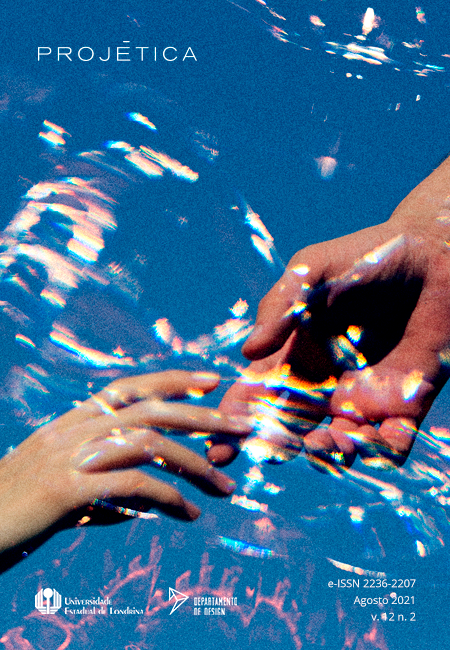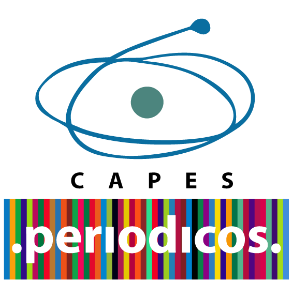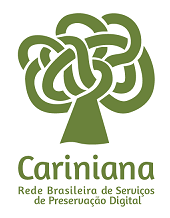The capabilities of blueberry (Vaccinium Myrtillus) under the perspectives of Slow Food and Slow Fashion
DOI:
https://doi.org/10.5433/2236-2207.2021v12n2p317Keywords:
Blueberry, Dyeing, Slow Food, Slow FashionAbstract
This research aims to present the slow food and slow fashion movements, showing the capabilities of blueberry (Vaccinium Myrtillus) as an integrating element among them, and towards the appreciation of regional tourism. To do so, an experimental research was carried out on the use of blueberry in handmade dyeing. In addition, an interview was used as instrument of data collection, conducted with one of the partners of Empório do Mirtilo, a company located in the city of Itá (Santa Catarina, Brazil) that works with a Pick and Pay system of the referred fruit. Two experiments were carried out, one with the blueberry peels, and the other with decomposing fruits. Based on the experiments, it is concluded that the results achieved were satisfactory, showing the possibility of using blueberry as raw material in this process.Downloads
References
CIETTA, Enrico. A evolução do fast-fashion. São Paulo. Estação das Letras e Cores, 2012.
De CARLI, Ane Mery Sehbe. Moda, sustentabilidade e emergências. Caxias do Sul: Educs, 2012.
EMPÓRIO DO MIRTILO. Nossa história. Disponível em: https://emporiodomirtilo.com.br/sobre-nos/. Acesso em: 20 set. 2019.
FERREIRA, Eber Lopes. Tingimento vegetal: teoria e prática sobre tingimento com corantes vegetais. Brasília, DF: Ministério do Meio Ambiente, 2005.
FLETCHER, Kate; GROSE, Lynda. Moda e sustentabilidade: design para a mudança. São Paulo: Senac, 2011.
GENTILLE, Chiara. Slow Food na Itália e no Brasil. história, projetos e processos de valorização dos recursos locais. 2016. Tese (Doutorado em Desenvolvimento Sustentável) - Centro de Desenvolvimento Sustentável, Universidade de Brasília, Brasília, 2016.
GIL, Antônio Carlos. Métodos e técnicas de pesquisa social. 6. ed. São Paulo: Atlas, 2008.
KRUCKEN, Lia. Design e território: valorização de identidades e produtos locais. São Paulo: Studio Nobel, 2009.
MARTINS, Uiara Maria Oliveira; GURGEL, Lorena Ibiapina ; OLIVEIRA, José Clerton de. Experiências com a gastronomia local: um estudo de caso sobre movimento Slow Food e o turismo gastronômico na cidade de Recife, Brasil. PASOS - Revista de Turismo y Patrimonio Cultural, La Laguna, v. 14, n. 1, p. 229-241, 2016. 11.
MIRANDA, Bruna. Slowlife: desacelerar o ritmo. 2014. Disponível em: http://reviewslowliving.com.br/2014/05/05/slow-life-desacelerar-o-ritmo/. Acesso em: 22 set. 2019.
MORI, Natalia Tinoco. Slow Fashion: conscientização do consumo de moda no Brasil. 2016. Monografia (Especialização em Estética e Gestão de Moda) - Escola de Comunicações e Artes, Universidade de São Paulo, São Paulo, 2016. Disponível em: http://www2.eca.usp.br/moda/monografias/NATALIA%20 MORI-USP.pdf. Acesso em: 22 ago. 2019.
NEYHAUS, Felipe. Entrevista referente ao modo de funcionamento do sistema colhe e pague do mirtilo. Itá, 22 out. 2019.
PISARSKI JUNIOR, Marcos Roberto; SOUZA, Silvana do Rocio de; PANZARINI, Yanca Theresia Peters. O movimento slow food e suas interfaces com o turismo: uma breve análise no Centro Histórico de Curitiba/PR, 2017. In: SEMANA PARANAENSE DE TURISMO DA UFPR, 24., 2017, Curitiba. Anais [...]. Curitiba: UFPR, 2017, p. 1-20. Disponível em: https://eventos.ufpr.br/ sepatur/SEPATUR/paper/download/943/280. Acesso em: 24 set. 2019.
PECCINI, Rosana. A gastronomia e o turismo. Revista Rosa dos Ventos, Caxias do Sul, v. 5, n. 2, p. 206-217, 2013.
SALCEDO, Elena. Moda ética para um futuro sustentável. Barcelona: Editora Gustavo Gili, 2014.
SALEM, Vidal. Tingimento têxtil. São Paulo: Edgard Blücher, 2010.
SANTOS, Aguinaldo. Sistema produto + serviço sustentável: fundamentos. Curitiba: Insight, 2018.
SILVA, Izabelle Todesquini. Tingimento natural em produtos de moda: alternativas para torná-lo mais eficaz. In: CONGRESSO BRASILEIRO DE INICIAÇÃO CIENTÍFICA EM DESIGN DE MODA, 3.; COLÓQUIO DE MODA, 12.; EDIÇÃO INTERNACIONAL, 9., 2016, [Curitiba]. Anais [...]. [Curitiba]: UTFPr, 2016. p. 1-4. Disponível em: http://www.coloquiomoda.com.br/anais/ Coloquio%20de%20Moda%20-%202016/POSTER/PO-08-Sustentabilidade/ PO-08-TINGIMENTO-NATURAL-EM-PRODUTOS-DE-MODA-ALTERNATIVASPARA-TORNA-LO-MAIS-EFICAZ.pdf. Acesso em: 25 ago. 2019.
TRINCA, Fabíola. Tingimento natural: novos desafios e ações sustentáveis. Rio de Janeiro, 2017. In: MAROTTO, Isabela (coord.). + Sustentabilidade às marcas de moda: reflexões e indicadores. Rio de Janeiro: [s. n.], 2017. cap. 9, p. 125-154. Disponível em: http://porfavormenoslixo.com.br/wp-content/ uploads/2018/01/LIVRO-SUSTENTABILIDADE-%C3%80S-MARCAS-DE-MODA. pdf. Acesso em: 24 set. 2019.
TYBEL, Douglas. O que é pesquisa experimental? 2017. Disponível em: https://guiadamonografia.com.br/pesquisa-experimental/. Acesso em: 12 nov. 2019.
Downloads
Published
How to Cite
Issue
Section
License
Copyright (c) 2021 Projetica

This work is licensed under a Creative Commons Attribution 4.0 International License.
Projética está licenciada sob a Creative Commons Attribution CC-BY 4.0 International. Os autores detém os direitos autorais e concedem à revista o direito de exclusividade de primeira publicação.
Os autores dos trabalhos aprovados autorizam Projética a, após a publicação, ceder seu conteúdo para reprodução em indexadores de conteúdo, bibliotecas virtuais e similares.
Os autores assumem que os textos submetidos à publicação são de sua criação original, responsabilizando-se inteiramente por seu conteúdo em caso de eventual impugnação por parte de terceiros. As opiniões emitidas pelos autores dos artigos são de sua exclusiva responsabilidade.
A revista se reserva o direito de efetuar, nos originais, alterações de ordem normativa, ortográfica e gramatical, com vistas a manter o padrão culto da língua e a credibilidade do veículo. Respeitará, no entanto, o estilo de escrever dos autores. Alterações, correções ou sugestões de ordem conceitual serão encaminhadas aos autores, quando necessário. Nesses casos, os artigos, depois de adequados, deverão ser submetidos a nova apreciação. As provas finais não serão encaminhadas aos autores.












